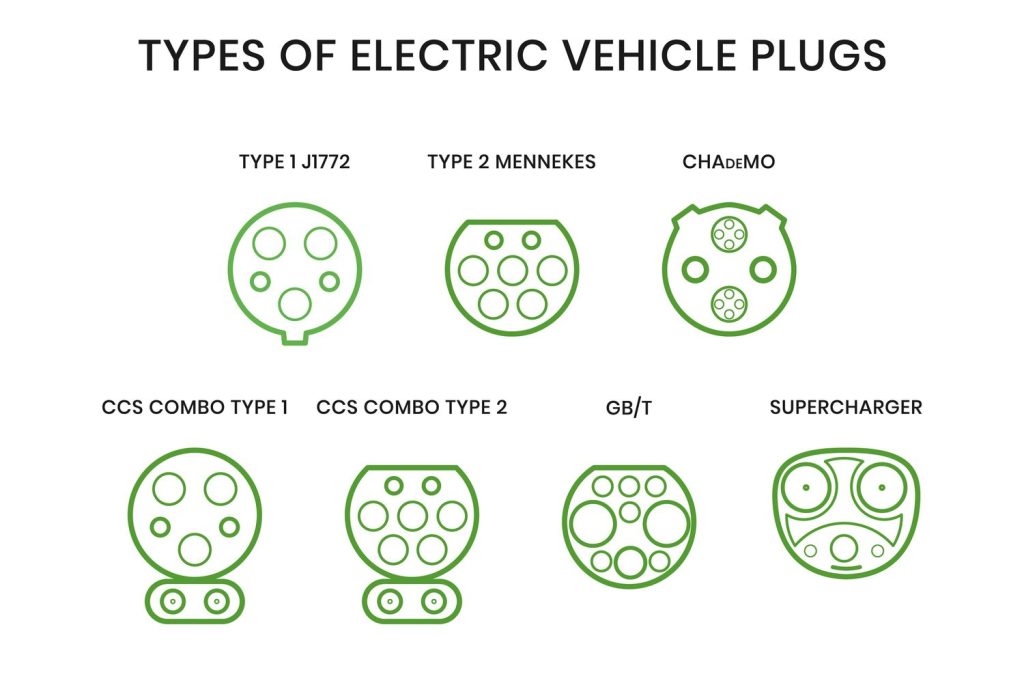
Type 1 plug (Yazaki)
The Type 1 isn’t that popular, since this is a 100V plug and it is mainly used in North America and Japan. Charging an electric car with the Yazaki plug is possible, but charging is much slower. This is caused by the fact that one of the three available phases is used with the Type 1 plug. This type of plug is found on cars such as the Opel Ampera, Nissan Leaf, Toyota Prius and Mitsubishi Outlander PHEV.
Chademo plug
The Chademo plug comes from Japan and is the standard for fast charging in the Netherlands. You can fully charge the car battery within half an hour with this plug. The disadvantage is that this plug only works with direct current.
Type 2 plug (Mennekes)
The Mennekes plug was designated by the European Commission as the standard for charging electric cars. The advantage of the Mennekes plug is that it is possible to use both 1-phase (power from the socket at home) and can be charged with 3-phase (power current). The Mennekes plug is found on car brands such as Tesla, Volvo V60 and BMW i3.
Combo Plug
Since 2017, the combo plug has replaced the Mennekes plug as the European standard plug. The big advantage of the combo plug is that it can charge with both direct current and alternating current.
Home charging cheaper than public charging
When you install a charging station at home, you pay the standard rate from the energy supplier, which is lower than at a public charging station. Depending on the location, you can easily pay twice as much compared to charging the battery at home with your own charging point.
What should I pay attention to when buying?
Can I charge my car at any charging station?
That depends on the type of plug that is suitable for your car. You can usually get by with a combo plug. Do you have a car with a type 1 connection? Then you can purchase an adapter plug, so that you can still charge it anywhere.
How long does it take to charge my car?
That depends on the maximum charging capacity of your car and the capacity of the charging station and your meter box. You can easily calculate the approximate duration yourself:
For this you take the power of the battery in your car, say 65 kWh, and that of your wallbox, say 22 kW, then it takes about 3 hours before the battery is fully charged. The condition is that your car and meter box can charge 22 kW.
What about charging my car with my own solar energy?
When you have your own solar panels, it becomes considerably more interesting to charge your car with your own wallbox. The green energy then goes directly into your car, without the intervention of the electricity grid. In this way, you are much closer to self-sufficient living.
For more information you should check out:












